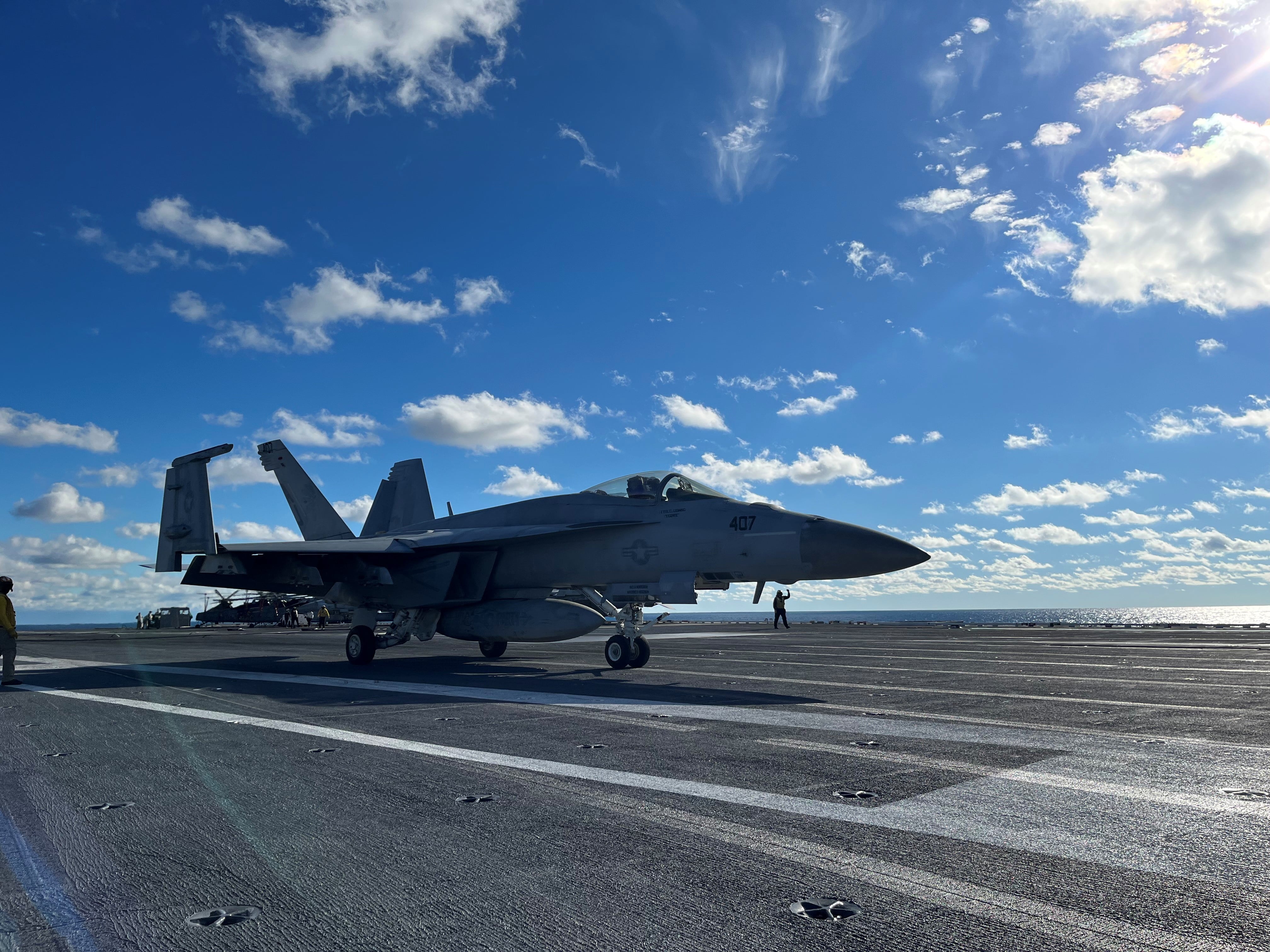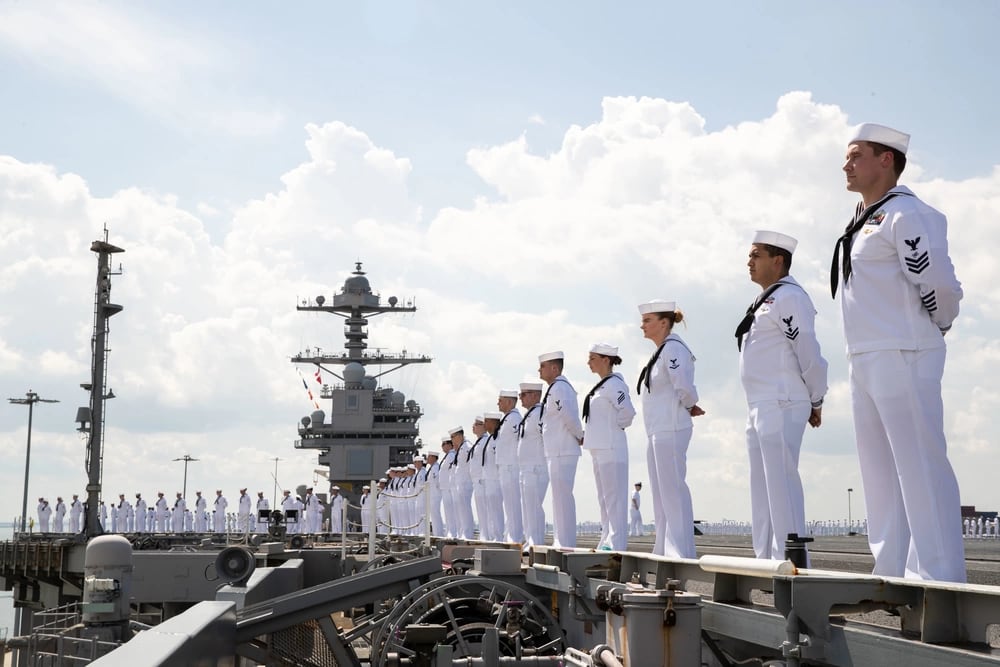Aircraft carrier Gerald R. Ford is slated to return to Naval Station Norfolk from its inaugural deployment Saturday.
The carrier, which got underway Oct. 4, and its strike group focused on air defense, anti-subsurface warfare, distributed maritime operations, and conducted a transfer of authority with NATO during their time underway.
This underway was designed to prepare the carrier for a lengthier, more typical deployment next year and for the crew to become better acquainted with the vessel’s new technologies, according to 2nd Fleet Commander Vice Adm. Daniel Dwyer.
The short, service-retained deployment meant the Ford’s strike group operated under the authority of Chief of Naval Operations Adm. Mike Gilday, rather than a geographic combatant commander, as would be the case in a global force management deployment.
“This historic service-retained deployment is an opportunity for the U.S. Navy to come together with other members of the NATO alliance to exercise and train within the Atlantic and its littorals while testing out advanced technologies on the first new class of U.S. aircraft carrier in more than 40 years,” Dwyer said.
RELATED

The carrier made port visits to Halifax, Canada, and Portsmouth, United Kingdom, while deployed, and operated with ships from Canada, The Netherlands, Denmark, France, Germany, Spain, Finland, and Sweden.
The carrier was also one of five allied aircraft carriers to operate together this month in the U.S. 6th Fleet to foster interoperability between NATO allies.
“It’s not good enough for the United States Navy to just operate, and operate the same way; we have to keep getting better,” Ford’s commanding officer Capt. Paul Lanzilotta told reporters in October. “So, I need to be able to provide objective, tangible things that our Navy can work on to do what we do better.”
The Ford’s carrier strike group includes the destroyers Ramage, McFaul and Thomas Hudner, the cruiser Normandy, the replenishment oiler Joshua Humphreys, dry cargo ship Robert E. Peary and U.S. Coast Guard cutter Hamilton.
The carrier was originally scheduled to deploy in 2018, but encountered multiple technical problems, equipment malfunctions and delays as at least 23 new technologies were incorporated into the design after construction of the ship kicked off in 2005. Systems like the advanced weapons elevators and the Electromagnetic Aircraft Launch System also experienced challenges.
Even so, Lanzilotta said he believes the Advanced Weapons Elevator is proving to be the most significant and influential.
“They legitimately move a lot more ordnance a lot more quickly than older ships,” Lanzilotta said. “And that’s an important enabler for warfighting.”




